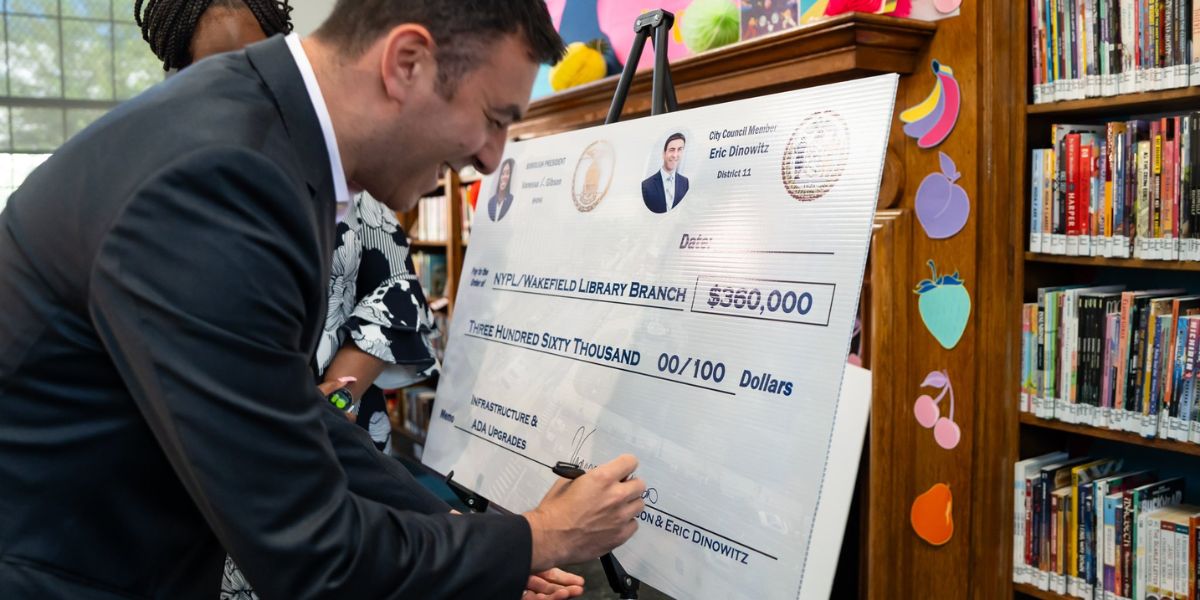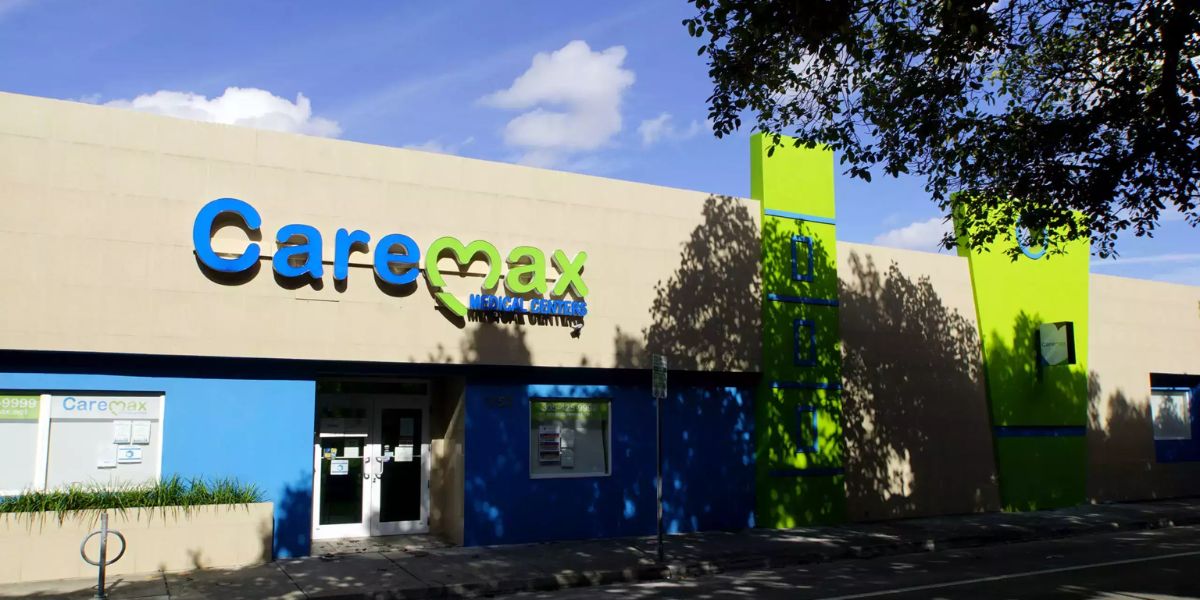A check for $360,000 was presented at the New York Public Library’s Wakefield branch on September 3 by District 11 City Council Member Eric Dinowitz and Bronx Borough President Vanessa L. Gibson. The funds will be used for infrastructure renovations and to make the library more accessible for persons with disabilities.
Present at the 4100 Lowerre Place celebration, Gibson stated, “This investment reflects our collective commitment to ensuring that every resident can fully access and benefit from all of our libraries.” A fully accessible and ADA-compliant main floor entrance and an ADA-upgraded restroom near the entry will be completed with $180,000 in financing from the offices of both Gibson and Dinowitz.
“Right here in The Bronx, our libraries are essential resources for education, personal growth, and community engagement,” says Gibson. They go far beyond the original mission of libraries by making a vast amount of knowledge available and by providing essential services. Our libraries play an essential role in enabling citizens to build stronger communities through a variety of services, including education, employment, cultural events, and digital resources.

“The real worth of our libraries goes beyond encouraging openness, imagination, and accessibility,” Gibson went on to say. Our libraries should be open and accessible to all citizens and visitors to New York. That is why expanding library access is a civic duty and a moral imperative that we should all strive to fulfill.
Affordable Housing Lottery Opens in Bronx: Rentals as Low as a Few Hundred Dollars
A $58 million loss to citywide public library funding was in the original municipal budget projections, but after lobbying by pressure organizations and arguments from elected officials like Dinowitz, the cuts were eventually reversed.
According to Dinowitz, the Wakefield library is “a really special place,” and the City Council shares this sentiment regarding all of the libraries in the city. Because of this, we battled like hell this year to prevent budget cuts to our libraries.
“We look around the city so often because we know that our resources aren’t truly accessible to everyone,” the councilman continued. The wonderful resources held by our libraries are inaccessible to many people, including those with impairments. Many other groups benefit from accessibility, but we know the disability community is leading the charge.
Dinowitz listed the elderly, people with disabilities, and parents pushing strollers as some of the groups that would gain the most from easier access. Following the presentation of the cheque, Gibson and Dinowitz toured the library.
The Norwood News spoke with Chantae Albright, the five-year manager of the Wakefield library, who said, “This is an opportunity, with the ADA project coming on, for more people to be able to enter to utilize our resources and participate in the programs we have.”
Fentanyl-Laced Pill Seller Ordered to Pay $5.8 Million for Young Woman’s Death
The Wakefield Library, designed by the renowned architect Thomas Dunn, was constructed in 1938. There are two levels to the library; the ground level houses the program rooms, while the first floor is the main reading area and collections. According to library authorities, there is now no intermediate landing at the library’s external accessible entrance, although there is one.
A total of 889,219 individuals, or 11% of the population, in New York City were identified as having a disability as of June 2011, according to CIDNY New York. Of the five boroughs in New York City, the Bronx had the greatest percentage of individuals with disabilities living in the community (13.7%), but the actual numbers of people with disabilities were higher in Brooklyn and Queens.
“We have a ramp, but it’s kind of difficult,” Albright added. It will be a terrific opportunity to make it easier for our patrons to come in, since staff will have to walk downstairs and unlock the entrance.
Library services are available to all residents of New York at no cost, according to Dawn Chance, associate director of the East Bronx Libraries. Traditional services, such book borrowing and internet usage, and our programming, which range from early literacy programs for our youngest readers to programs that encourage lifelong learning, are relied upon by patrons of all ages at their local libraries.




